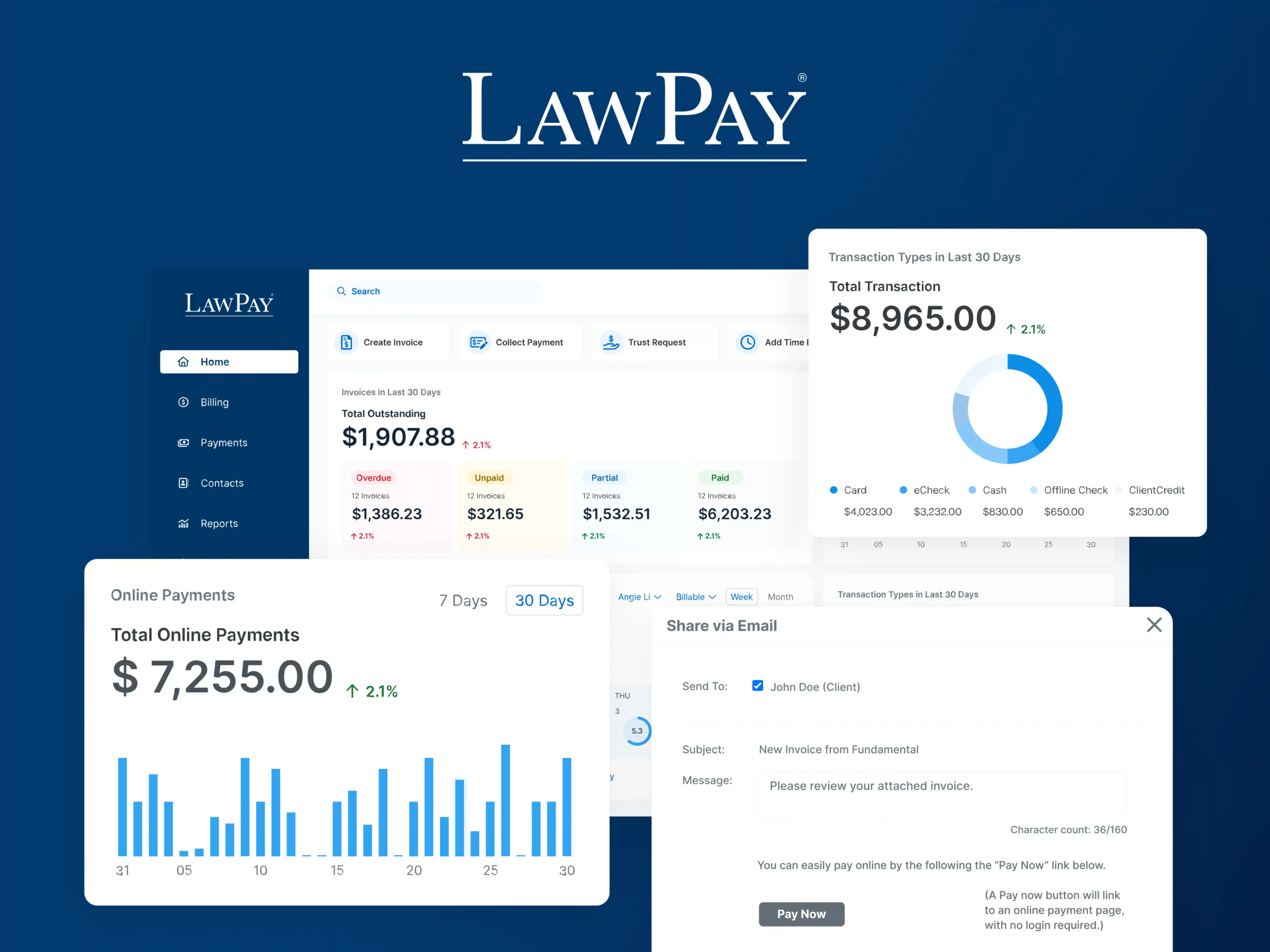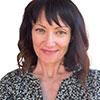Key takeaways
Lawyer time tracking is the process of documenting tasks completed throughout the workday. Some lawyers track their time manually on a notepad or spreadsheet. Others use technology solutions, such as digital timers or time trackers built into their case management software.
Whatever the system, an attorney time sheet should outline:
A description of the task
The date, start time, and end time
If the task was billable and, if so, to which client
Who else was involved in the task
If any documents or outcomes resulted from the task
Whether you bill hourly for your services or by the project, the time spent on client work drives your income. However, keeping track of billable hours is a common challenge for many lawyers. Our 2025 Legal Industry Report found that time tracking is a top financial management challenge for 55% of lawyers.
A lack of accurate time-tracking data also makes it difficult to identify workflow inefficiencies or justify expenses to address those inefficiencies. Rather than jotting down time notes in the margins of a legal pad or in a note on your phone, your law firm can use uniform attorney time sheets to log time.
In this article, we’ll provide three simple attorney time sheet templates to help your law firm consistently track its time. We’ll also explain the importance of efficient time tracking, key challenges, and tips to help your law firm more efficiently track time and improve profitability.
Daily Attorney Time Sheet Templates
Recording time in a daily attorney time sheet—and ideally, in real time—can help you maintain accurate records and minimize the need to recall tasks. This type of template also avoids the complexity of comprehensive time sheets. However, if you find it valuable to review your tasks over a longer period, a weekly or monthly template may be a better fit.
To use the daily template, you’ll manually enter details for each time entry. The sheet will auto-calculate the total time and total rate for the day as you add information. Download our daily attorney time tracking template as a Google Sheet or Excel file.

Note: You must be logged in to a Google Account to open and make a copy of the Google Sheets templates.
Weekly Attorney Time Sheet Templates
Weekly templates capture all time entries for the week to provide a more holistic view of time spent on clients, tasks, and cases. Seeing this information in one spot can help you adjust your prioritization in real time. For example, if you spent more time than scheduled on one client early in the week, you can plan to work on other clients for the rest of the week.
Weekly attorney time sheets can strike a great balance between daily tracking and high-level data, but they may not be comprehensive enough for in-depth analysis. To use the weekly template, you’ll also need to fill out time entries manually. However, the template includes an additional sheet that autopopulates all entries and autocalculates totals from the week.
Download our weekly attorney time sheet template as a Google Sheet or Excel file.

Note: You must be logged in to a Google Account to open and make a copy of the Google Sheets templates.
Monthly Attorney Time Sheet Templates
Monthly time sheet templates are better for lawyers who want to use them as a high-level workload overview. These documents help centralize data and make it easier to export or do calculations in the sheet. However, managing a month’s worth of data may become cumbersome to work with each day. Law firms also risk accidentally altering records if someone edits the incorrect field.
The monthly template works similarly to the weekly template. Instead of logging time by individual days, the template includes a sheet for each week. The final sheet will autopopulate and autocalculate all entries from the month.
Download our monthly sample attorney time billing sheet template as a Google Sheet or Excel file.

Note: You must be logged in to a Google Account to open and make a copy of the Google Sheets templates.
Key Components of Attorney Time Tracking Templates
Standardized attorney time sheets can help your law firm create a more efficient and accurate legal billing process. With more uniform data collection, your law firm can expedite billing and make more informed decisions around resource allocation.
Consider including the following components for your law firm’s time tracking template:
Team member information, including the time sheet owner’s name and their supervisor’s name
Case and client information, including case number, client name, and applicable billing or client codes
Task name and description
Time tracked for each task
Dates for each task, along with the time sheet’s date range
Totals for time logged and total billable amount to the client
Rate for each task
Categorization for billable and non-billable hours if not already distinguished with billing codes
Why Is Efficient Attorney Time Tracking Important?
Attorney time tracking is important because the data helps you understand how you spend your time, ways you can be more productive throughout the day, and opportunities to improve your law firm’s profitability.
Regardless of your law firm’s fee agreements with clients, you can leverage time tracking data in multiple ways. In addition to creating invoices for hourly clients, you’ll be able use time records to justify and manage your fee structure. In addition, it’s much easier to address a billing dispute when you can reference who worked on the case, how much time they spent, and what tasks they completed.
Understanding the average hours required to complete a project can also help you evaluate non-hourly fees and the value of your work—and if you need to consider a fee increase to optimize your law firm’s cash flow.
For example, if your law firm consistently spends more time on legal research for clients with more complex cases, that may be a sign to either increase your rate or assign the case to a more senior lawyer.

What Are the Key Challenges of Manual Attorney Time Tracking?
Manual time tracking—the legacy method for attorney time tracking—is inefficient, prone to inaccuracy, and can make it difficult to manage a law firm’s finances. We’ll explore these challenges and explain why they can lead to underbilling.
Accuracy
To accurately capture time with manual methods, you’ll typically log your work at the end of each task. If you wait until later, you risk inaccuracies if you struggle to recall tasks and time spent on those tasks.
Manual time tracking also works best when you have a clean start and finish for each task—but that's probably not how you work. You might be reviewing a file for one client, only to be interrupted by a phone call from a different client.
That type of interruption may happen a dozen times throughout your day. You likely aren’t thinking about logging a time entry for the first client as you answer the second client's call. Instead, you might jot your time down as the phone call winds down. Or you might put it off and dive back into your earlier project.
Efficiency
Manual time tracking throughout the day is also disruptive. Logging time immediately requires you to divide your attention between client work and time tracking. But if you log time later, you can spend valuable minutes, maybe hours, scouring your calendar and emails to reconstruct your activities.
More inefficiencies arise when you don’t integrate your time-tracking method with your billing application. You or someone else may have to aggregate time entries by client, then cut and paste task dates and descriptions into the appropriate invoices. In that process, human error can easily lead to invoicing mistakes.
Underbilling
As a result of inaccurate time tracking and inefficient workflows, you may run the risk of underbilling clients.
For example, you may forget some of those short, unexpected phone calls and emails that pull you away from larger projects. You may spend two hours or more cumulatively on those disruptive tasks each week. That could translate to thousands in lost billing opportunities each month.
Lawyer Time Tracking Tips
Using a standardized attorney time sheet is one of many tips for improving your lawyer’s time tracking workflow. Below, we’ll review additional strategies to support more accurate time tracking.
Log and Calculate Time Right Away
Make it a habit to log time throughout your day. This reduces your reliance on memory, which is often inaccurate or incomplete. Real-time tracking helps you capture more billable hours and maintain a more detailed record of your productivity.
Encourage your law firm to use a legal billable hours chart to standardize time entries across your firm. As an example, a task that takes seven to 12 minutes will be logged as 0.2 billable hours. Consistency will reduce the time needed to convert entries and, as a result, more quickly generate invoices.
Run a Timer as You're Performing a Task
Running a timer as you work also improves the accuracy of your time logs and minimizes disruptions.
Once you start the timer, you can temporarily forget about time tracking and focus on completing the task at hand. You won't have to hold a start time in the back of your mind or glance at the clock every six minutes as you work.
Write Detailed Descriptions for Time Entries
Create straightforward and detailed descriptions for each time entry that your firm and your clients can understand.
These descriptions can help you inform clients about the work completed on their cases and justify the amounts charged in invoices. Detailed time entry summaries can also provide context as you look for ways to improve your law firm’s processes.
For example, if you add “document review” as your description for a long block of time, it’s unclear how you spent your time or why the task required multiple hours. However, if you wrote, “Reviewed 200+ pages of discovery documents,” this may reveal that you need more efficient document review software. It may also justify higher rates for more challenging cases.
Create Realistic Time Estimates for Scheduling
Proactively schedule your day with time-bound tasks to help you better predict and manage your day.
Creating a plan can help you remember unscheduled work that interrupts your flow and will throw off your day's plan. Although interruptions are inconvenient, you're less likely to forget the cause of the disruption.
Scheduling your day with time-bound tasks also provides instant feedback on your ability to estimate how long things take.
Both outcomes can help you recreate accurate time logs later if you forget to do it throughout the day.
Capture Billable Time for Passive Tasks
Passive tasks include time spent on phone calls, writing emails, and other routine tasks that you can easily forget to log. Utilize passive time trackers that can run in the background to help you capture time as you switch tasks. Some trackers also integrate with your computer or phone system to automatically log time.
Use Standardized Attorney Time Sheet Templates
Uniform attorney time tracking templates can help your law firm stay organized and centralize time entries in one document. Templates help guide your team to log the same information, while sample attorney time billing sheets can help your staff understand what level of detail they should include.
Without a template, you may default to writing time entries on sticky notes or the top sheet of the closest notepad. Later, you'll scramble to locate these casual notes.
Free online platforms like Google Sheets allow your team to access time tracking sheets via desktop or mobile. They can also make updates in real time without needing to keep track of multiple file versions.
Pros | Cons |
|---|---|
Offers a structured way to record time | Requires partial or fully manual data entry |
Free to download | Relies on manual data transfer for billing and accounting |
Requires minimal technical expertise | May create versioning issues if using multiple copies |
Automate Legal Time Tracking
Automation can help your law firm address all the drawbacks of traditional timekeeping. Legal e-billing solutions with automated time-tracking features can quickly capture billable time, expedite time logging, and improve efficiency throughout your billing process.
Time-tracking software is also a popular choice among law firms. In our 2025 Legal Industry Report, we learned that 67% of law firms use software with basic time tracking features.
LawPay’s lawyer time tracking features work in tandem with other tools to record your work continuously:
Built-in work timers: You can start and stop up to three timers to manage unplanned client disruptions.
Integration of time records for invoice generation: Your timesheet data flows into client invoices, so you don't have to cut and paste task descriptions.
Time tracking dashboard: Set up daily, weekly, and monthly time tracking goals and review progress in streamlined dashboards.
Default rates: Assign hourly default rates for each employee to standardized billing.
Track Time More Efficiently With LawPay
Disciplined time tracking is central to the health of your business. An attorney time sheet is a great start but may not scale well as your law firm grows.
LawPay’s lawyer time tracking solutions can streamline your law firm’s workflow with built-in timers and centralized case and financial data. Rather than manually logging time and transferring data to invoices, LawPay automatically links time data to cases for more accurate invoices.
Schedule a LawPay demo today to learn how your law firm can achieve a more thorough, efficient timekeeping process.
Schedule a demo to see what LawPay can offer your firm.
Get a demo
About the author

Catherine BrockContent Writer
Catherine Brock is a Content Writer for leading legal software companies, including MyCase, Docketwise, CPACharge, CASEpeer, and LawPay—the #1 legal payment processor. She covers emerging legal technology, financial wellness for law firms, the latest industry trends, and more.
